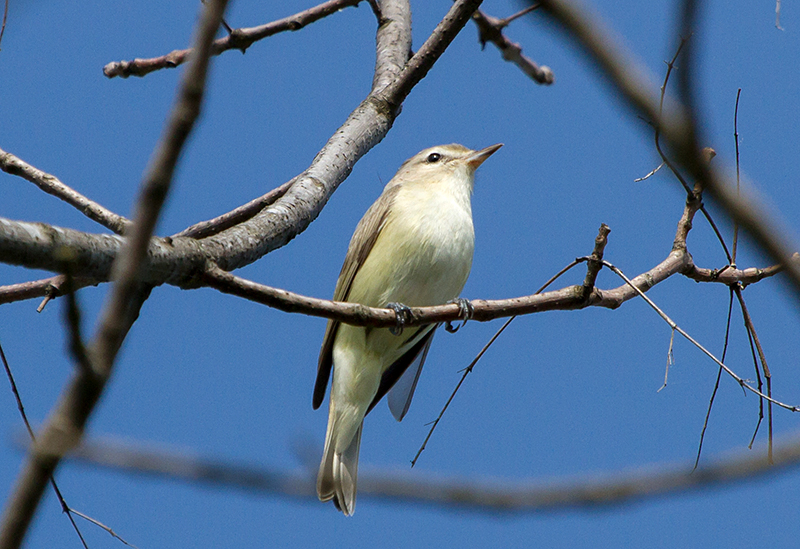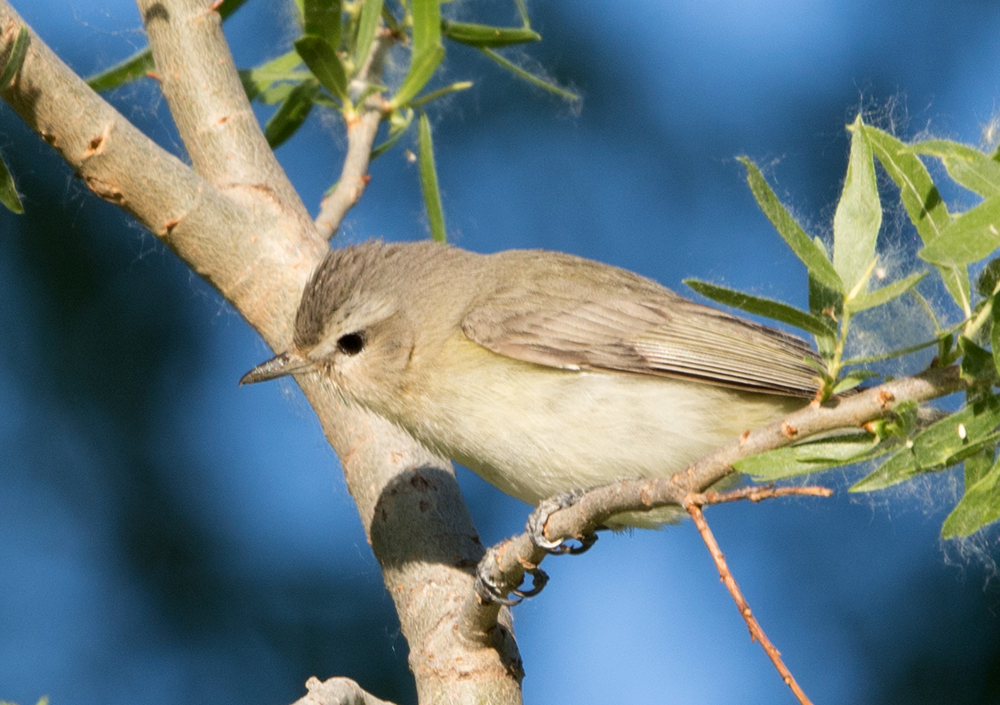| Early Spring Date: | April 15 |
| Late Spring Date: | May 22 |
| Infrequently Seen | |
Spring: Warbling Vireos nest in the Washington metro area, including at Dyke Marsh and along the C&O Canal, but they are uncommon at Monticello Park. In most years, none have been recorded at Monticello.
Fall: Very few Warbling Vireos have ever been recorded at Monticello during the fall.
Where to See Them in the Park
Warbling Vireos usually forage in the canopy. Sometimes, they perch in the canopy and sing. Because they look so drab, they can be difficult to find, even if they are singing.
Physical Description


Warbling Vireos are nondescript, and their drabness can be one of the characteristics for identifying them. They have a dull brown back with no wingbars. They have light underparts that sometimes have a yellowish wash. The light line over the eye does not stand out as much as on some of the other vireo species. The sexes look similar. Plumage does not vary between the spring and fall, but birds of both sexes in each season can look either brighter or duller.

On some birds, the line over the eye is barely visible.
Vocalizations
The Warbling Vireo's song is a long warble that sounds like a House or Purple Finch. The song of Warbling Vireos in the eastern United States varies from the song of western ones.
Hear the vocalizations of the Warbling Vireo.
Notes
Warbling Vireos are found throughout the United States and Mexico, as well as parts of Canada and Central America. Birds in different areas sometimes have different plumage, and taxonomists are considering whether to split the species.
Origin of Names
Common Names: Warbling from its song. Vireo is Latin for green.
Genus Name: Vireo means green.
Species Name: Gilvus means yellowish.
Warbling Vireo video footage
Return to the Index
